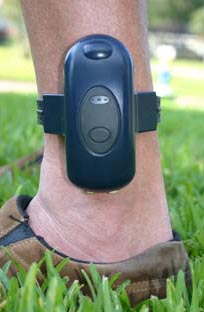
Crowdsourcing has gained some attention in the GNSS community as a means for detecting and mitigating RF interference and signal spoofing.
In the past year, researchers and commercial ventures have developed ways to take advantage of the GNSS-derived knowledge of real-time location of participants to create ad hoc networks of couriers.
Crowdsourcing has gained some attention in the GNSS community as a means for detecting and mitigating RF interference and signal spoofing.
In the past year, researchers and commercial ventures have developed ways to take advantage of the GNSS-derived knowledge of real-time location of participants to create ad hoc networks of couriers.
Earlier this year, Palo Alto, California–based Deliv announced plans to begin “crowd-shipping” operations using part-time couriers to deliver goods based on their proximity to participating retail outlets and their customers. The company’s cofounder and CEO, Daphne Carmeli, was a founding team member of WebMd and is the former head of Netscape e-commerce.
Last Thursday (December 12, 2013) Deliv announced alliances with three of America’s largest mall operators, Simon Property Group, Macerich, and Westfield, to provide the same-day service. Together with a partnership established earlier this year with General Growth Properties (GGP), the second-largest U.S. mall operator, the companies manage more than 660 malls including thousands of retailers across the country.
The operators have begun a rollout of Deliv-powered services across nine malls including GGP’s Stonestown Galleria (San Francisco), Eastridge (San Jose), Glendale Galleria (Los Angeles), and Oakbrook Center (Chicago); Macerich’s Santa Monica Place (Santa Monica) and Westside Pavilion (Los Angeles); Simon’s Stanford Shopping Center (Palo Alto); and Westfield’s Century City (Los Angeles) and Valley Fair (Santa Clara).
Backed by $7.85 million in venture capital and partnership with leading mall operators in the country, Deliv draws on a crew of crowdsourced workers — typically part-timers, such as college students and retirees — equipped with GPS-enabled smartphones to provide same-day delivery in their local area.
With typical delivery charges between $5 and $15 — which may be further reduced by retailer subsidies — the business will compete with traditional delivery operations by FedEx, UPS, and Amazon, but without the need for a bricks-and-mortar warehouse infrastructure of the latter.
Deliv’s technology can be integrated directly into retailers’ e-commerce systems enabling customers to select a same-day delivery option during online transactions. The Deliv application programming interface (API) makes extensive use of GPS-derived lat/lon coordinates for routing, estimation of delivery time, and real-time tracking available to customers on online maps.
Customers can order products online for delivery to local stores, which in effect serve as distribution centers for the operation. Growth prospects for the venture are attractive. Of today’s $70 billion delivery market, same-day delivery is estimated to be only about $500 million.
Mobile Delivery En Route
Researchers associated with Microsoft Corporation and Google are trying to extend the crowdshipping capability even further, by predicting the future locations of individuals within a window of time that could allow them to become part of a delivery network.
In a paper presented at the 2012 AAAI Conference on Artificial Intelligence, “Far Out: Predicting Long-Term Human Mobility,” Adam Sadilek, a Google data scientist and former visiting researcher at Microsoft, and John Krumm, a principal researcher at Microsoft Research, introduced the concept of “TwedEx,” using geotagged Twitter messages to linkages in a potential delivery network.
The authors proposed “an efficient nonparametric method that extracts significant and robust patterns in location data, learns their associations with contextual features (such as day of week), and subsequently leverages this information to predict the most likely location at any given time in the future.”
Using more than 32,000 days worth of data of GPS-tagged “tweets” from 703 Twitter-using participants in a Seattle area field trial indicated that their model predicts the correct location with high accuracy, even years into the future.
In a follow-up paper, “Crowdphysics: Planned and Opportunistic Crowdsourcing for Physical Tasks,” Sadilek and Krumm, joined by another Microsoft researcher, Eric Horvitz, examined whether their technique could support delivery of packages to a moving target — what they referred to as “local opportunistic routing under uncertainty.”
Presented last July at the 7th International AAAI Conference on Weblogs and Social Media, the paper extended the evaluation to New York and invited readers to consider how such a service, currently unavailable, would operate:
“Imagine that you wish to send a gift to a friend. You write only the friends unique identifier on the package and drop it into the crowd substrate. The identifier can be a telephone number, email address, or Twitter handle. Workers then route the package among themselves until one of them meets the target person. Thus, the only constraint in this system is that the package has to be delivered to the recipient as fast as possible. Aside from that, the delivery can occur anywhere, anytime.”





